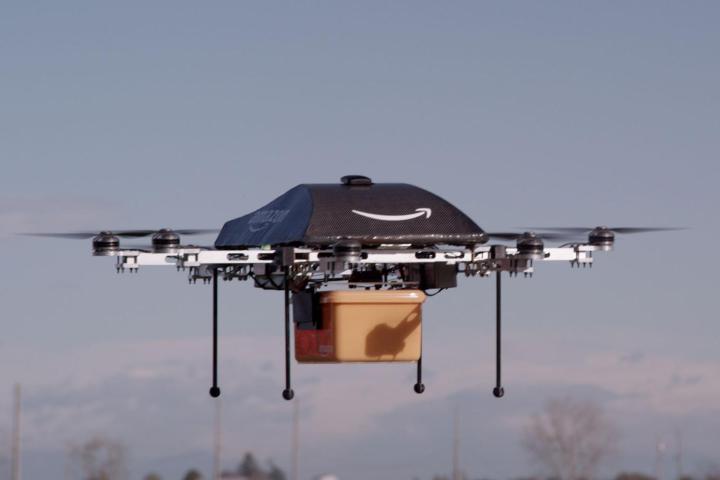
Ahead of today’s hearing, Paul Misener, Amazon’s VP for global public policy, said in a statement that taking into account the interstate nature of drone operations, states and localities “must not be allowed to regulate” approved quadcopters and similar unmanned flying machines, “including with respect to airspace, altitude, purpose of operations, performance and operator qualifications.” He added that “uniform federal rules must apply.”
Different rules in different areas would further complicate Amazon’s ambitious plan to deliver goods by drone in super-fast time, though the company clearly appears keener than ever to see the initiative through. It’s even working with NASA and others on developing an air traffic control system for unmanned aircraft systems (UAS) to ensure safety in the skies and to reassure the Federal Aviation Administration (FAA) that it’s approaching the matter in a responsible manner.
DC visits
This isn’t the first time for Amazon to hit Congress to let lawmakers know how it feels about drone-related issues.
A couple of months ago, Misener turned up to vent his feelings about the FAA. He insisted that the agency’s work on drawing up regulations for the commercial use of drones has been painfully slow, and expressed his disappointment at its slow response to Amazon’s special request to test its Prime Air flying machine in the U.S.
The Amazon executive told the Senate Committee on Commerce, Science and Transportation that the country “remains behind in planning for future commercial UAS operations,” adding that his company is “allowed to innovate in other countries in ways that we cannot in the U.S.”
Misener said that nowhere outside of America had the company been required to wait more than a couple of months to start testing its drone, giving Amazon “room to experiment and rapidly perfect designs without being required to continually obtain new approvals for specific UAS vehicles.”
Proposals
Earlier this year the FAA released a list of regulation proposals for the commercial use of drones. These include a speed limit of 100 mph and an altitude limit of 500 feet. It also stipulates that drones will have to be flown within the line of sight of the operator and in daylight hours only, two proposals that Amazon hopes will not be included in the final set of rules that are expected to be announced later this year or soon after.
FAA detractors claim the agency’s apparent reluctance to adopt a more flexible approach regarding drone regulations could persuade more U.S-based businesses interested in the technology to shift their bases overseas, taking investment and jobs with them. Amazon, for one, has already conducted tests outside of the U.S., and has even opened an R&D facility in the U.K.
Misener will appear before the House Oversight and Government Reform Committee on June 17 alongside, among others, a senior FAA official and a privacy advocate, Reuters reported.


